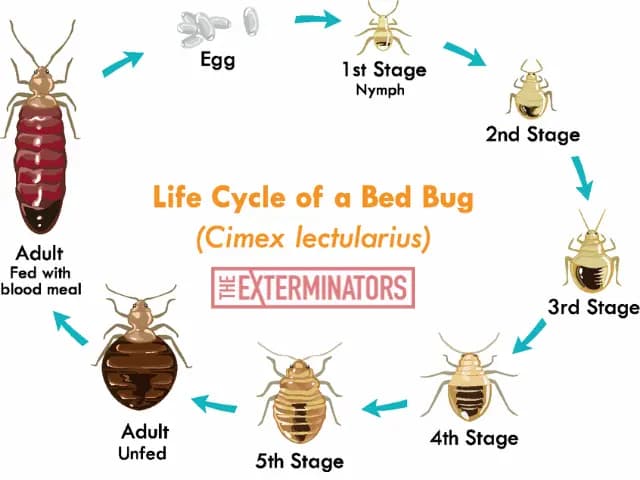Bed bugs are small and brownish external parasites that solely feed on blood and live under the bed or inside crevices next to beds. They have flattened bodies with oval shapes but assume cylindrical bodies when they feed on blood. These insects bite hard and leave lesions on the skin of people. They normally come out of their hideouts at night to feed on blood. Though they normally feed on human blood, bed bugs can also feed on other warm-blooded animals including cats, dogs and mice. The control of bed bugs is complicated due to their nature which allows them to mutate easily. The most common types of bedbugs found in different parts of the world include the following:
- Household bed bug
This is the most common type of bed bug among human beings. They are found in almost every part of the world since they are capable of adapting to various environments easily. However, these types of a bed bugs are mostly found in temperate regions. As long as they receive a steady supply of blood from their hosts, they will continue living inside the same room and the same place for a long time.
The life cycle of household bed bugs
Their life cycle starts with the female bug laying eggs. One female bed bug is capable of laying two to five eggs per single day which means they can lay up to 500 eggs in their lifetime.
The eggs hatch into nymphs in as short as a week’s time given normal room temperature. The nymphs then grow through five stages, moulting between stages until they are adults in about one month.
- Tropical bed bugs
As the name suggests, these are bed bugs found in the tropics. They have similar biological resemblance and can be difficult to differentiate between them and the normal household bugs. They can as well be classified into other various species according to the regions they are found though this is globally insignificant.
- Bat bug
These species sucks blood from bats as their main host. However, in absence of bats they may find their way into houses and feed on human blood. They are mostly found in West Africa and Southern America and they also share similar biological development with the household bugs.
Other related insects are the Mexican Chicken Bug which normally infests different species of birds. It is however hard for this type of bugs to feed on human blood as long as the poultry unit is constantly fumigated with insecticides.
Generally bugs are very adaptive and can persist long duration of time without sucking blood. According to different climatic and environmental conditions, they can stay for up to a year without sucking blood. They appear whitish in colour during this period. The good thing regarding these notorious insects is that there is no reported disease caused by their bites.
Maintaining cleaner environments inside the house will greatly reduce their infestation. They are also known for their constant mutation and resistance to various pesticides and therefore much care should be done while controlling them.

